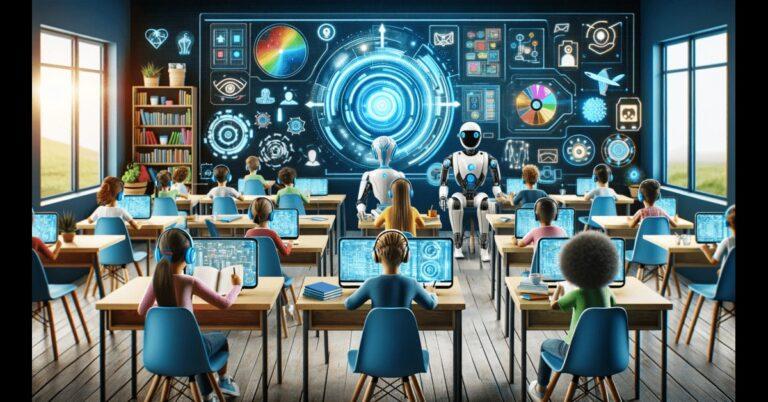how EdTech is Revolutionizing Environmental Education: Innovative Approaches and Impact
In today’s rapidly changing world, environmental challenges such as climate change, pollution, and biodiversity loss have brought environmental education to the forefront. Traditionally, environmental education relied on textbooks, lectures, and field trips.However, with the rise of EdTech (educational technology), a new wave of innovation is empowering educators and students alike. Through immersive tools, interactive platforms, and global resources, EdTech is revolutionizing environmental education—preparing a new generation to take informed action for a greener future.
Why EdTech Matters in Environmental Education
As technology becomes increasingly integrated into our daily lives, its impact on education for sustainability is undeniable. Here’s why EdTech is transforming how we learn about the surroundings:
- Accessibility: Online learning resources break geographical barriers, making environmental content accessible to students worldwide.
- Engagement: Interactive simulations, gamification, and multimedia projects foster deeper involvement and curiosity.
- Up-to-Date Content: Digital content is easily updated,reflecting the latest scientific findings and environmental policies.
- Collaboration: Virtual classrooms connect students and educators for collaborative projects, citizen science, and global initiatives.
Innovative Approaches in Environmental Education via EdTech
EdTech platforms are deploying a variety of cutting-edge methods to make environmental education not only more effective, but also more inspiring:
1. Interactive E-Learning Modules
Digital courses offer interactive explanations, quizzes, and videos covering topics like ecosystems, renewable energy, and lasting agriculture.These modules can be personalized to suit different learning levels and languages, ensuring inclusivity.
2. Virtual and Augmented Reality Experiences
VR and AR bring environmental science to life. Imagine taking a virtual tour of the amazon rainforest, exploring coral reefs, or simulating the impact of climate change in your own city. These immersive experiences spark empathy and a personal connection to ecological issues.
3. Gamification and Mobile Apps
Games like Eco, Mission: Water, and mobile apps such as iNaturalist turn learning into a hands-on adventure. Users can complete challenges like reducing their carbon footprint,participate in digital clean-ups,or identify local plant and animal species. Gamification encourages sustained engagement and real-world submission.
4. Online Citizen Science Platforms
Tools like Zooniverse or the Globe Program enable students to contribute to real scientific research, collecting and analyzing environmental data. Such citizen science initiatives nurture scientific literacy and foster active environmental stewardship.
5. Open Educational Resources (OERs) & MOOCs
Open-access environmental courses on platforms like Coursera, edX, and Khan Academy provide high-quality learning to all, frequently enough with hands-on, project-based components that apply theory to practise.
The Multifaceted Benefits of EdTech in Environmental Learning
Leveraging EdTech in environmental education brings important advantages to both learners and educators:
- Scalability: Reach thousands with minimal physical resources.
- Adaptability: Content can be customized for specific regions or issues, from ocean plastics to local conservation efforts.
- Real-Time Feedback: Automated assessments help students track their progress and adjust learning strategies accordingly.
- Community Building: Forums, discussion boards, and collaborative projects empower participants to organize campaigns and share solutions globally.
- Data-Driven Insights: Analytics allow educators to identify learning gaps and optimize instruction.
Real-World Impact: Inspiring Case Studies
Let’s explore some standout examples of EdTech’s transformative role in environmental education:
Case Study 1: Global Forest Watch (GFW) – On-the-Ground Conservation
GFW uses satellite technology and big data analytics to monitor global deforestation.By accessing real-time maps on the GFW platform,students and community leaders in countries like Indonesia and Brazil have organized local conservation efforts,stopped illegal logging,and engaged policymakers.
Case Study 2: WWF’s Wild Classroom – Immersive Learning
In partnership with Google Expeditions, the WWF’s Wild Classroom offers VR-powered journeys into endangered habitats. Teachers report a significant increase in students’ environmental interest and empathy after participating in these virtual field trips—especially among urban youth with limited access to nature.
Case study 3: Earth School by TED-Ed & UNEP – Remote global Education
Launched during the COVID-19 pandemic, Earth School delivered daily lessons on sustainability topics to children in over 190 countries. Blending video content, quizzes, and interactive projects, this initiative demonstrated EdTech’s power to keep environmental learning relevant and accessible, even during school closures.
Practical Tips: Maximizing the Impact of edtech in Your Environmental Education Program
- Blend Digital and Physical Learning: Combine virtual resources with real-world projects—like school gardens or recycling programs—to reinforce concepts.
- Leverage Community Partnerships: Partner with local NGOs or green businesses to contextualize digital lessons with local action.
- Promote Digital Literacy: ensure learners are cozy navigating EdTech platforms and interpreting environmental data.
- Foster Creativity: Use multimedia assignments (podcasts, videos, blogs) to let students creatively express environmental solutions.
- Encourage Ongoing reflection: Regularly discuss how digital activities relate to real-world environmental issues and personal choices.
Challenges and the Road Ahead
While the promise of EdTech in environmental education is immense, some hurdles remain. Gaps in internet access and digital literacy can create disparities in who benefits.Content overload is also a risk if not curated for quality and relevance.Ongoing investment in teacher training and infrastructure is essential to ensure equitable access and effective implementation.
Looking ahead, future innovations—such as AI-driven personalized learning, blockchain-based credentialing, and even more immersive augmented reality—promise to further democratize and enrich environmental education worldwide.
Conclusion: Empowering a Greener Future Through EdTech
EdTech is reshaping environmental education—breaking down barriers, boosting engagement, and connecting global communities around sustainability. By harnessing digital tools and innovative approaches, educators are equipping students with the knowledge, empathy, and skills needed to tackle the world’s most urgent environmental challenges.
Whether you’re a teacher, parent, student, or lifelong learner, embracing EdTech in environmental education opens a world of transformative opportunities. the future of our planet depends on how we learn and act today—let’s make the most of the digital revolution for a sustainable tomorrow.

